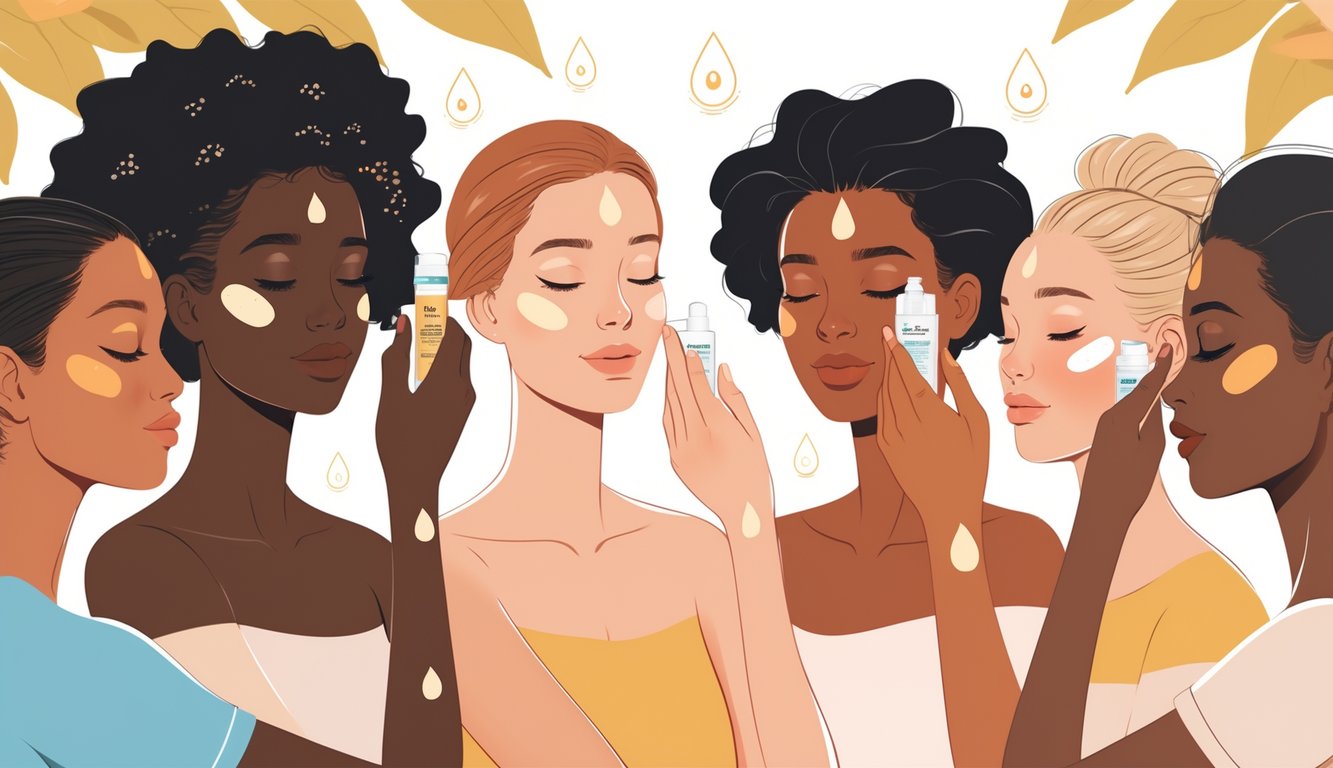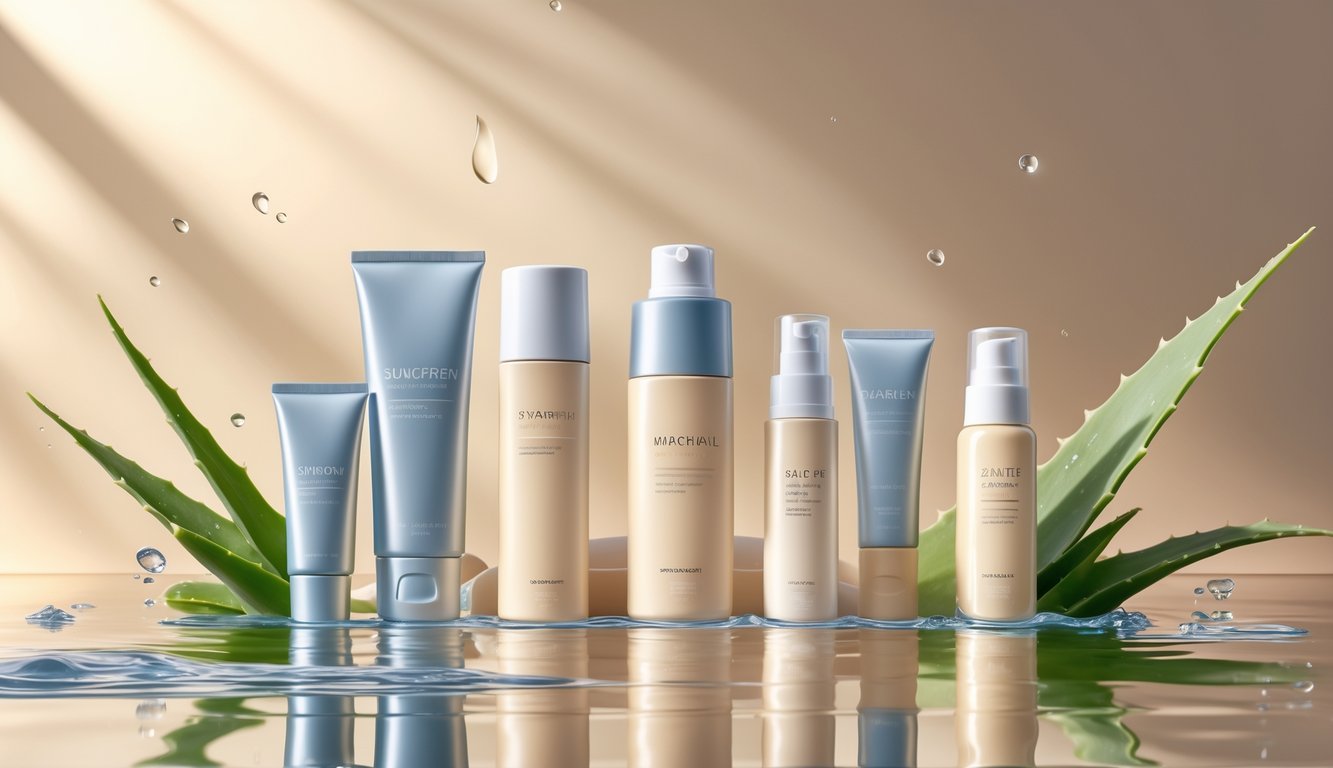Must-Have Sunscreens Quietly Adding Breakthrough Skin Benefits You’ll Notice Fast
Mineral vs. Chemical Sunscreens: What Really Works?
Choosing sunscreen lately feels less like a summer ritual and more like a cosmetic chemist’s puzzle. Whether I’m reaching for an EltaMD mineral formula or mentally calculating if that new Supergoop! chemical sunscreen will feel greasy on my T-zone, product details and ingredient lists constantly compete for my attention.
How Active Ingredients Affect Your Skin
The drama always starts with the actives. Mineral sunscreens—zinc oxide and titanium dioxide—sit on the skin and deflect UV rays.
Chemical sunscreens like avobenzone, octocrylene, or oxybenzone absorb UV and convert it to heat. I still get annoyed when a brand—let’s say Neutrogena Ultra Sheer—lists eight actives in tiny font, like I have time to Google each one mid-aisle.
Mineral filters usually don’t sting my eyes and honestly, I rely on them after retinoids—but the white cast? It’s real, especially with generic “SPF 50” sticks.
Chemical filters often vanish into my skin. Drugstore Coppertone feels weightless, but sometimes I feel a faint tingle around my cheeks.
Skin sensitivity makes active selection a mess, not a trend.
Pros and Cons for Different Needs
People keep telling me all sunscreens are the same, but I’ve argued about this with friends. Here’s what actually matters in daily use:
| Mineral Sunscreen | Chemical Sunscreen | |
|---|---|---|
| Protection | Immediate after application | Wait 15 minutes; absorbs UV |
| Wearability | Can look chalky, some feel thick | Sheer, lightweight, blends easily |
| Sensitive skin | Rarely irritates, hypoallergenic | Sometimes stings or clogs pores |
| Water resistance | Variable; some rinse off easily | Usually more water resistant |
I keep La Roche-Posay Anthelios chemical SPF in my gym bag for pool days—it doesn’t budge. For hiking, Badger Broad Spectrum mineral SPF keeps my face sane, even if it messes with my selfies.
No “breakthrough” will make the perfect sunscreen, but matching formula to my skin and plans? That’s the only hack I trust.
Finding Your Perfect Match: Skin Tone & Skin Type Solutions

It never fails—sunscreen shopping turns into an overstuffed puzzle, just trying to dodge the stuff that slides off my oily nose, stings my skin, or leaves me looking purple on Zoom. Navigating all this actually gets easier when I focus on formulas that directly address my particular pain points, not just hyped-up benefits.
No White Cast and Tinted Options
My biggest sunscreen annoyance besides sticky residue? The unmistakable white cast that so many mineral SPFs leave, especially on my medium skin tone.
Unless I want to look ghostly or like I spent the morning baking in zinc, options are limited. That’s where tinted sunscreens come in—EltaMD UV Elements and Australian Gold’s Botanical Tinted, for instance, blend in basically invisibly.
Untinted mineral sunscreens usually owe their chalky appearance to zinc oxide or titanium dioxide. Tinted versions use iron oxides to even out color and cut the glare on deeper complexions.
For those in a rush (or lazy like me), I genuinely love sunscreen-makeup hybrids. These often double as sheer foundation—think La Roche-Posay Anthelios Mineral Tinted—so my skin tone looks less flat and more alive, no caked-on feeling.
Quick tip: always check how it looks in natural light, since bathroom mirrors lie.
Sunscreens for Oily and Acne-Prone Skin
I’ve lost count of how many greasy face sunscreens I’ve tossed because they left my T-zone extra shiny and my pores clogged. The trick I always come back to: scan those labels for “noncomedogenic” and “oil-free.”
Gel and water-based sunscreens—Neutrogena Hydro Boost Water Gel, for example—sink in fast, feel weightless, and actually leave a soft-matte finish that holds up midday.
For genuinely acne-prone skin, my dermatologist forced me to try La Roche-Posay Anthelios Clear Skin. It has silica and perlite for oil control and doesn’t trigger breakouts (finally).
If I’m layering with other treatments—niacinamide serums or spot correctors—I stick with lightweight, broad-spectrum SPF 30+ formulas, since heavier creams just compete and pill.
Shortlist: gel types, mattifying or anti-shine claims, zero added fragrance.
Sensitive Skin and Fragrance-Free Picks
My facial skin hates surprises, which rules out 90% of random drugstore finds. If, like me, redness and irritation show up easily, physical (mineral) sunscreens are usually safer—zinc oxide and titanium dioxide are less likely to mess with my skin barrier.
Side note: aveeno’s Mineral Sensitive Skin Face Sunscreen is almost always a fallback. Fragrance-free is a non-negotiable for me.
Scented “beachy” formulas will sometimes sting my cheeks all day. Dermatologists (or my overly honest mom) direct me toward picks like Blue Lizard Sensitive Face or Vanicream SPF, which leave out not just fragrance but also parabens and unnecessary dyes.
As a weird bonus, some baby sunscreens double as super gentle face picks—think CeraVe Baby SPF—because they stick to minimal, calming ingredients. Fewer extras, fewer worries.
Always patch test if you’ve got unpredictable skin like mine.
Texture, Finish, and Everyday Use

Honestly, some days I feel like half my time is spent hunting for a sunscreen formula that won’t make me look either ghostly or greasy. There’s no patience left for thick, chalky creams or sticky layers—especially when I actually need to reapply at my desk or before running errands.
My criteria are sort of ruthless: lightweight, non-comedogenic, and ideally with a finish that could pass for skin, not armor.
Lightweight and Dewy Sunscreens
I keep circling back to how EltaMD UV Clear feels like applying nothing, but it keeps breakouts on lockdown, which is a rarity for me. Texture-wise, it behaves—no heavy residue, just fast absorption.
I can swipe it on after my CeraVe moisturizer, and within a minute, it’s invisible and non-tacky. There’s also something to the newer hydrating sunscreen gels.
Some, like Supergoop! Play Everyday Lotion, offer that dewy finish—subtle, not “freshly fried.” The best part? They’re water-based or include squalane, pulling double duty as both a lightweight sunscreen and a moisturizing sunscreen single step.
No surprise they’re labeled “daily use” right on the box. For folks who hate feeling product on their skin, mineral SPFs like La Roche-Posay Anthelios Melt-in Milk feel dreamily weightless but skip the heavy silicones.
Most formulas now avoid strong scents, which matters on those days when even a faint fragrance feels like an attack.



